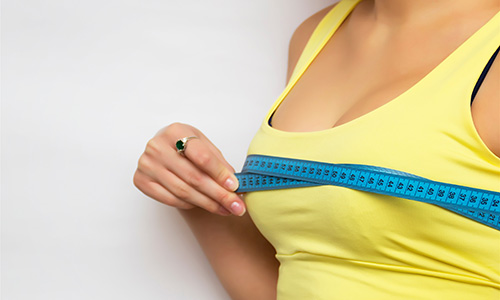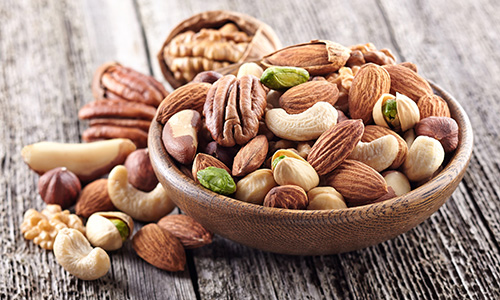Patients' tips and hints after breast augmentation
- Overview
- Full article

If breast augmentation (enlargement) surgery is in your future, putting some thought into your post-surgical care is an important step to ensuring your recovery is as stress free as possible.
Your surgical and pre-assessment teams will prepare you well for many aspects of your post-operative recovery. The focus will be on pain relief, medications, work, management of the dressings, what activities or exercises to do and what not to do. They may well talk to you about things like travel, flying, holidays or childcare.
But we asked patients what hints and tips they would pass on to those following in their footsteps and share some of the most common advice below.
Sleeping after breast augmentation
Good sleep is important at the best of times, but it is essential after surgery and there are few operations where the way you sleep is more important than breast augmentation.
Sleep is key to a healthy immune system which will give you a better and speedier recovery. It has also been shown to reduce pain.
Sleep on your back
It is often recommended to sleep on your back and slightly sat up for a while. It reduces swelling, enhances circulation and keeps the breasts in the most natural position as they heal even when wearing a bra.
Learning to sleep soundly in a new position doesn’t happen overnight. Practice sleeping on your back. Like all things practice makes for better results and it is possible to train yourself to sleep on your back. It will allow you to identify what you might need such as extra pillows or a bed wedge. It may even identify problems such as lower back discomfort which could be addressed beforehand or helped by a support under the knees.
Prepare spare sheets
Make sure that you have spare sheets. You are going be lying in bed a little longer than normal and won’t be inclined to be doing lots of extra washing.
Cut back on sleep inhibitors
Avoid known sleep disruptors like caffeine, alcohol, sugar, and limit screen time in the hour before sleep.
But remember, although rest is important, activity is too. Walk around regularly throughout the day; this helps with circulation and reduces the risk of developing blood clots. It also helps keep you from getting stiff and achy from too much immobility.
Prepare your kitchen for after surgery
As with sleep eating and drinking well after surgery is key to a good recovery. Adequate fluid intake is very important. Buying drinking straws may help make drinking easier when you are on your back and reduce the need to bend.
Buy small
In the immediate aftermath of breast surgery lifting can be painful. Empty the kettle before you go in for surgery. After surgery you will not want to lift a heavy kettle. If you usually buy large cartons of fruit juice or milk, replace these with smaller cartons for a few weeks to reduce the load you’re lifting.
Stock up on healing foods

Stock up with food that you would want to eat in the week after surgery. Calorific foods are not all bad at this stage but give consideration to foods that will aid your body in healing. Nuts such as cashews, almonds, walnuts and pine nuts are great for healing skin tissue. Seeds including pumpkin, sesame and sunflower help with tissue regeneration. Fruits like apple, banana, orange, kiwi and pineapple boost immune system. Protein, which you can get from chicken, fish, eggs, beans, soy or grains are essential macro-nutrients for repairing tissue.
Eat little and often
One important piece of advice is to eat smaller and perhaps more frequently. Large meals require energy to digest. If you can, eat smaller portions or have light meals to allow your body energy to recover. You’ll want to avoid eating a larger meal right before bed. Having a lot of food sitting in your stomach can feel worse when lying your back, increasing heartburn and indigestion.
Reducing exertion after breast surgery
Stretching and bending can be difficult to start with. Reduce the need to exert yourself in this way by moving things up high down to waist level and things at ground level (for instance phone chargers or remote controls) easily reachable on a table.
A good exercise in making your home ‘post-op ready’ is to walk around the house, carrying out your usual routine but without reaching or bending. It will help you see what tasks are difficult to perform so you can make changes before going in to hospital.
Washing post-surgery
Your surgeon will have spoken to you about how long to keep dressings dry or, if waterproof dressings are used, how to shower. But patients also recommended buying a large packet of cleaning wipes to save you a few extra journeys to the bathroom, and to consider purchasing a shower stool to prevent you having to stand for too long as it's common for patients to feel a bit weak during the first few days after surgery.
Clothes
Your surgeon will probably advise a non-underwired bra initially. Many post-op patients recommend seamless sports bras as they are more comfortable and attractive. Whatever it is make sure that it is not worn over your head and that it is supportive. That rules out boob tubes.
Make sure you have loose fitting clothing ready to wear when you’re home, when your scars are still tender it will be easier to slip in and out of loose fitting clothes and they should offer you some extra comfort when you need it. Remember that these clothes should be within easy reach so maybe leave a selection on a chair in the bedroom so you’re not having to search through drawers or on clothes lines.
Last updated Tuesday 3 December 2019
First published on Thursday 21 March 2019

